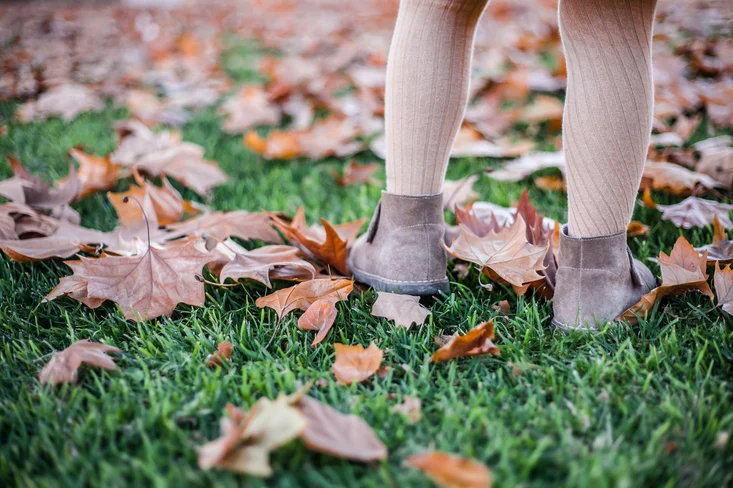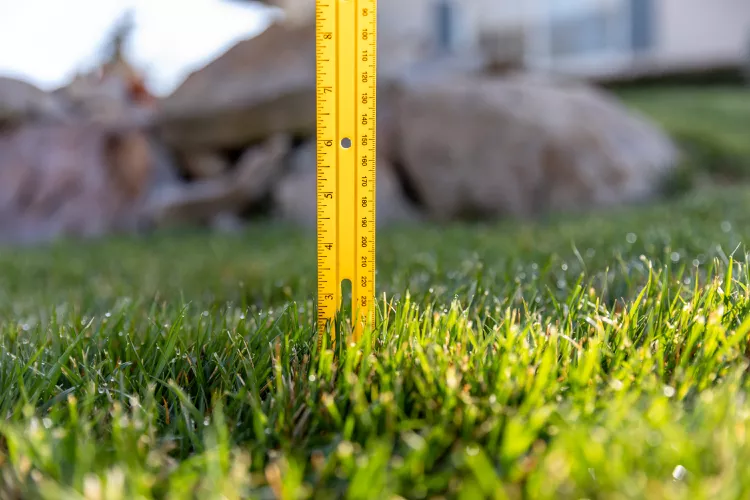Winter Lawn Care For Warm Climates
Last Updated on October 27, 2025 by Duncan
Winter in the Deep South is magnificent. The sun shines, the humidity reduces, and you don’t have to deal with ice and snow, except for the rare frigid temperatures.
All of this means your grass still requires some attention, and you’ll need a winter lawn care strategy.
To help you out, here are some suggestions for keeping your lawn healthy during the winter in a warm climate.
Dormant grass isn’t dead.
Most grass goes dormant at some point, even in temperate climates like the deep South, which only sees periodic cold snaps. It’s simply an issue of how dormant.
Warm-season grass begins to grow more slowly as the weather cools, typically around mid-November.
The grass then goes entirely or partially dormant in the winter, depending on how low the temperature dips.
This implies that your grass may not appear as brilliant and green as usual, but this is not cause for concern, and it does not mean you need to pile fertilizer on it to kickstart it.
When the weather warms up again, your lawn will return to its beautiful green state. Warm-climate lawns often awaken from their winter hibernation when soil temperatures are above 65℉. Once soil temperature hits 55℉, growth may occur.
If you’re concerned that your lawn has genuinely succumbed to an unexpected temperature drop, you can conduct a simple test to determine whether it’s dead or just dormant.
Cut a couple of small plugs with shoots and roots attached and place them in a pot. Place this pot in a warm, sunlight-filled area and see how it grows. If it does, don’t worry; your lawn has simply gone dormant for a bit.
In Florida, Alabama, Georgia, Louisiana, Texas, and other Southern states, lawns may remain green all year. This depends on the grass species. A few familiar warm-season turfs are:
In frost-free environments, Bermudagrass will remain green throughout the winter. Throughout cooler climates, it goes dormant and grass turns brown throughout the winter.
Bermudagrass often enters dormancy earlier, at 55℉, and lasts longer than other warm-season grasses like bahiagrass and Zoysia. Bermudagrass begins to turn green when the soil temperature reaches 60℉ in early spring.
Zoysiagrass, like all other warm-season grasses, slows down throughout the winter. When properly cared for in warmer locations, Zoysia retains its green hue throughout the winter. It is more hardy than Bermudagrass and may remain green throughout the year in USDA zones 6-11 and transition zones.
The color may fade in a freeze, but don’t worry. Zoysia’s strong roots allow it to thrive in temperatures as low as 20℉. It is drought-tolerant and requires little watering. Overall, Zoysia is a relatively self-sustaining grass. It comes out of dormancy when the temperature reaches 50℉.
St. Augustinegrass becomes dormant in winter when the soil temperature dips to 55℉ or lower. The grass eventually stops growing and goes brown. Because St. Augustinegrass stops growing, it requires relatively little water to survive the winter, although mowing may stress it.
Dormancy can endure for weeks or months, depending on the climate, and returns to life when the temperature exceeds 55℉. In extremely warm climates, such as South Florida, this grass species may never go dormant and remain green year-round.
Centipedegrass is often known as “the lazy person’s grass” since it requires little upkeep. It does not fall dormant like Bermudagrass or Zoysia; instead, it enters a semi-dormant state when temperatures drop below 55℉ in warm areas.
So, chances are, your centipede grass will remain green throughout the winter. Centipedegrass requires little to no mowing or fertilization, but it does need to be watered occasionally.
If it freezes, the top may turn brown during the semi-dormant stage. Don’t get stressed over it. Simply continue taking care of it.
Keep weeding
Although many people in warm climates have a vacation from shoveling snow, weeding is a year-round chore. There are no breaks there.
You should continue weeding during the winter while you rake and remove debris and thatch. Keeping the yard clear of unwanted vegetation keeps the lawn healthier and better prepared to withstand the winter.
You should apply a broadleaf weed control during this time to ensure that you are keeping the weeds off.
Early winter is ideal for reducing henbit, dandelions, creeping Charlie, and other weeds. You can either spot-treat with herbicide or dig them out. If you use herbicides, pay close attention to the temperature recommendations.
Herbicides are more effective when the temperature is 50 degrees or higher, as this is when weeds flourish.
Be cautious how you fertilize.
It is wise not to fertilize your lawn in the winter since grass does not grow well when it is cold, and the soil will not absorb the additional nutrients from fertilizer.
Fertilization works effectively for Zoysiagrass, St. Augustinegrass, Bermudagrass, Bahiagrass, crabgrass, and centipedegrass when they are developing rapidly.
Instead, fertilize your grass by mid-September. You should do this final fertilization before winter with a product containing equal or greater levels of potassium than nitrogen, such as 15-0-15. This helps grass tolerate the cold.
Also, never use winterizer-containing fertilizers. They are intended for lawns that go fully dormant in the winter, not for lawns in warm climate where winterizing is less of an issue.
If you must apply fertilizer during winter in a warm climate, search for fertilizers with the following three essential ingredients:
- Phosphorus (P) promotes root health and growth.
- Nitrogen (N) for the dense top
- Potassium (K) promotes general strength.
- Zinc and iron are beneficial micronutrient supplements.
Aerate your lawn
Your grass requires strong roots to survive the winter and fully bloom in the spring. Aerating helps the grass breathe, promotes root growth, and reduces thatch buildup.
Thatch can lower drought tolerance and make your lawn more prone to insects and diseases, so getting rid of it quickly is critical.
The spongy thatch layer may also cause soil compaction. Choose core aerators to treat and prevent future soil compaction.
They successfully remove minor clogs and allow water, air, and nutrients to quickly access the roots, leaving your lawn healthier and greener.
You can also leave the soil plugs on the grass so they decay naturally and help the soil. Always aerate the lawn while it is moist but not soggy.
Mow your lawn correctly.
Continue cutting both cool- and warm-season grass until it stops growing. You will most likely continue until late fall, which is fantastic because mowing over fallen leaves adds organic matter to the soil as they degrade.
This also prevents the leaves from forming a mat, which could smother the grass.
Also, lower your mower’s height and cut the grass shorter. Shorter grass improves air movement and helps to drain extra water.
For example, if you mow at 2.5 to 3 inches during the growing season, gradually reduce the mowing height to two inches over two or three mows before the final cut. When mowing, be cautious not to go too short; otherwise, you may encourage diseases and weeds.
Get rid of debris
Different types of trees shed leaves at varying periods of the year. Do not let them accumulate on your lawn. Wet leaves that pile up can promote fungal development, suffocate grass, and provide a habitat for unpleasant lawn pests.
Similarly, winds may throw branches and other debris onto the lawn, obstructing drainage and causing crown hydration. You can avoid all of this if you continue to rake and tidy the yard during the winter.
Water your lawn sparingly.
During the coldest months, ensure that your grass receives at least half an inch of water every week. This means that if you entirely turn off the water, you risk losing the lawn system during the coldest weather.
A simple rule would be to cut your lawn watering routine in half during the winter and irrigate as needed. Also, turn off the sprinklers to avoid overwatering your yard.
Reduce the traffic on your lawn.
Slow winter growth makes your lawn more prone to soil compaction. To reduce foot traffic during the winter, create walkways with stepping stones, gravel, or wood chips on frequently traveled routes.
In the winter, dormant or sensitive grass can withstand modest traffic, but high traffic may cause more problems.


